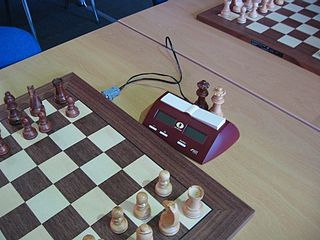
Shogi, also known as Japanese chess or the Game of Generals, is a two-player strategy board game native to Japan in the same family as chess, makruk, shatranj, janggi and xiangqi, and is the most popular chess variant in Japan. Shōgi means general's board game.
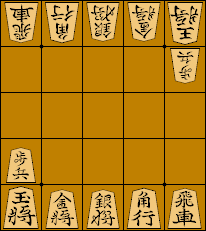
Minishogi is a modern variant of shogi. The game was invented around 1970 by Shigenobu Kusumoto of Osaka, Japan. The rules are nearly identical to those of standard shogi, with the exception that it is played on a 5x5 board with a reduced number of pieces, and each player's promotion zone consists only of the rank farthest from the player.
Makrukpronounced [màːk rúk]), or Thai chess, is a board game that descended from the 6th-century Indian game of chaturanga or a close relative thereof, and therefore related to chess. It is regarded as the most similar living game to this common ancestor of all chess variants.
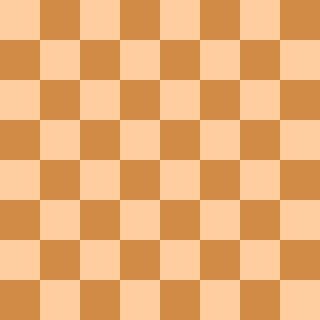
Kriegspiel is a chess variant invented by Henry Michael Temple in 1899 and based upon the original Kriegsspiel developed by Georg von Reiswitz in 1812. In this game each player can see their own pieces, but not those of their opponent. For this reason, it is necessary to have a third person act as a referee, with full information about the progress of the game. When it is a player's turn he or she will attempt a move, which the referee will declare to be 'legal' or 'illegal'. If the move is illegal, the player tries again; if it is legal, that move stands. Each player is given information about checks and captures. They may also ask the referee if there are any legal captures with a pawn. Since the position of the opponent's pieces is unknown, Kriegspiel is not a game with perfect information. As each player cannot see his opponent's pieces, the game is sometimes referred to as blind chess.

Kyoto shogi is a modern variant of shogi. It was invented by Tamiya Katsuya c. 1976.
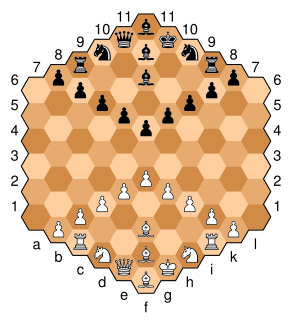
Hexagonal chess refers to a group of chess variants played on boards composed of hexagon cells. The best known is Gliński's variant, played on a symmetric 91-cell hexagonal board.

Yonin shōgi,, is a four-person variant of shogi. It may be played with a dedicated yonin shogi set or with two sets of standard shogi pieces, and is played on a standard sized shogi board.
Three-player chess is a family of chess variants specially designed for three players. Many variations of three-player chess have been devised. They usually use a non-standard board, for example, a hexagonal or three-sided board that connects the center cells in a special way. The three armies are differentiated usually by color.
Okisaki shogi is a modern variant of shogi. It was developed by Masayuki Nakayachi c. 1996 from suggestions by German chess player Ralph Blockhaus.

The following outline is provided as an overview of and topical guide to chess:

Dragonfly is a chess variant invented by Christian Freeling in 1983. There are no queens, and a captured bishop, knight, or rook becomes the property of the capturer, who may play it as his own on a turn to any open square. The board is 7×7 squares, or alternatively a 61-cell hexagon with two additional pawns per side.

Triangular Chess is a chess variant for two players invented by George R. Dekle, Sr. in 1986. The game is played on a hexagon-shaped gameboard comprising 96 triangular cells. Each player commands a full set of chess pieces in addition to three extra pawns and a unicorn.

Trishogi is a shogi variant for two players created by George R. Dekle, Sr. in 1987. The gameboard comprises 9×10 interlocking triangular cells. The game is in all respects the same as shogi, except that piece moves have been transfigured for the triangular board-cell geometry.

Hexshogi is a shogi variant for two players created by George R. Dekle, Sr. in 1986. The gameboard comprises 85 hexagonal cells. The game is in all respects the same as shogi, except that piece moves have been transfigured for the hexagonal board-cell geometry.

Masonic Chess is a chess variant invented by George R. Dekle, Sr. in 1983. The game is played on a modified chessboard whereby even-numbered ranks are indented to the right—resembling masonry brickwork. The moves of the pieces are adapted to the new geometry; in other respects the game is the same as chess.

Chesquerque is a chess variant invented by George R. Dekle, Sr. in 1986. The game is played on a board equaling four Alquerque boards combined, and like Alquerque, pieces move along marked lines (9×9) to the points of intersection. All the standard chess pieces are present, plus one additional pawn and one archbishop fairy piece per side. The pieces move in ways specially adapted to the Alquerque-gridded board.

Tri-Chess is the name of a chess variant for three players invented by George R. Dekle, Sr. in 1986. The game is played on a board comprising 150 triangular cells. The standard chess pieces are present, minus the queens, and plus the chancellor and cardinal compound fairy pieces per side.
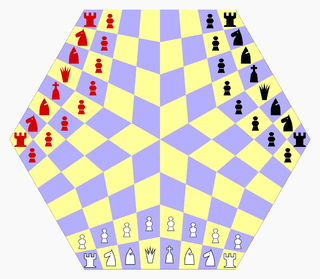
Three-Man Chess is a chess variant for three players invented by George R. Dekle, Sr. in 1984. The game is played on a hexagonal board comprising 96 quadrilateral cells. Each player controls a standard army of chess pieces.
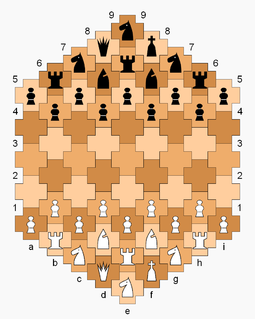
Cross Chess is a chess variant invented by George R. Dekle, Sr. in 1982. The game is played on a board comprising 61 cross-shaped cells, with players each having an extra rook, knight, and pawn in addition to the standard number of chess pieces. Pieces move in the context of a gameboard with hexagonal cells, but Cross Chess has its own definition of ranks and diagonals.

Quatrochess is a chess variant for four players invented by George R. Dekle, Sr. in 1986. The board comprises 14×14 squares minus the four central squares. Each player controls a standard set of sixteen chess pieces, and additionally nine fairy pieces. The game can be played in partnership or all-versus-all.








